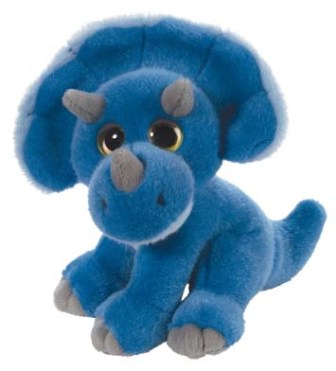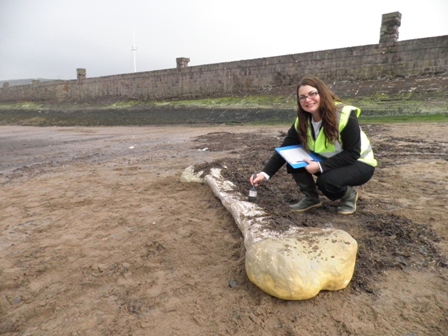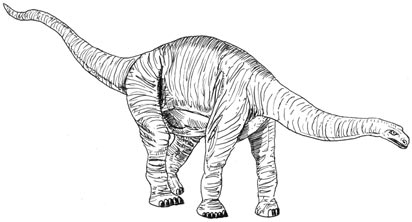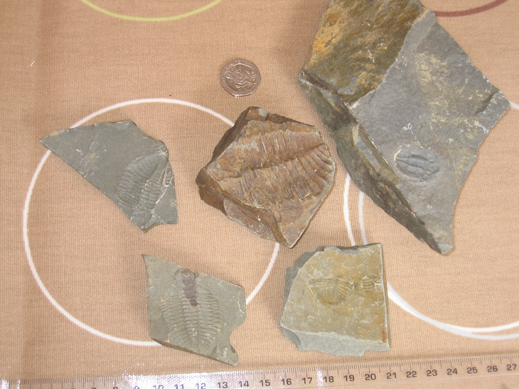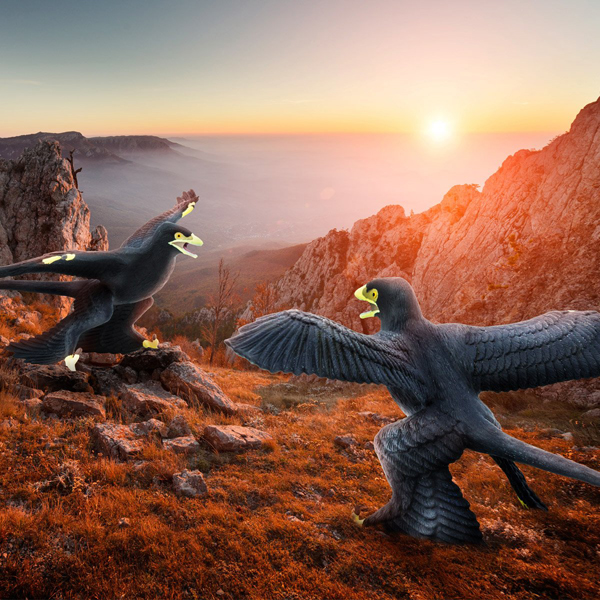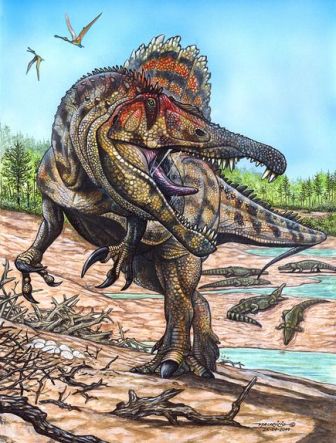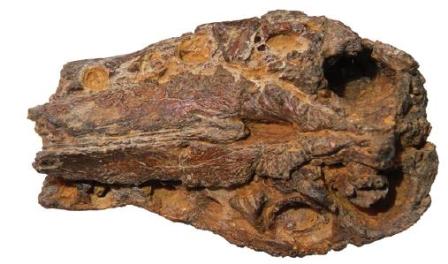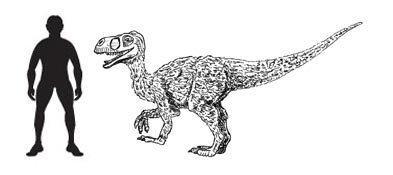Zhuchengtyrannus magnus – A fearsome Chinese Tyrannosaurus
It may have been a little awkward, after all, with the press releases about the discovery of a new member of the tyrannosaur clade (Zhuchengtyrannus magnus), one that may rival the likes of Tarbosaurus bataar and Tyrannosaurus rex in terms of size on the eve of April Fool’s Day, but the good news is the ever growing family of Tyrannosauridae has definitely got a new member, and who knows, perhaps a second one is on the way.
The trouble is, if there is a press release sent out about dinosaurs at the end of March, some parts of the media automatically query it as they regard such information as a potential April Fool story. There are a number of bogus articles doing the rounds, we know, we have been asked to comment on a few and indeed, aid in the preparation of one (sauropod femurs turning up on the coast of Cumbria).
However, amongst an extensive hadrosaur bone-bed an international team of dedicated palaeontologists have literally pieced together the evidence to indicate that there was at least one giant tyrannosaur theropod roaming the Shandong province of China in the Late Cretaceous and what a fearsome beast Zhuchengtyrannus may turn out to be.
An Illustration of Zhuchengtyrannus magnus
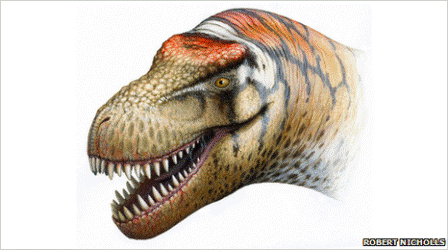
Picture credit: Robert Nicholls
Zhuchengtyrannus magnus
With the information being published in the scientific journal “Cretaceous Research” we can reveal that based on measurements made of the fragmentary elements of the skull material found, it seems that this particular tyrannosaur may have measured as much as 11 metres long with a body weight tipping the scales at around six tonnes.
Dr David Hone from University College (Dublin), the palaeontologist given the job of naming this ferocious predator and the scientist who led the research team that has worked on the fossilised bones stated:
“There is no doubt that Zhuchengtyrannus was a huge Tyrannosaurine.”
More information on this remarkable discovery, we think only the second really big tyrannosaur to be discovered in this region of China, can be found on David’s excellent and highly informative web log – Archosaur Musings.
Doctor Hone went on to comment:
“With only some skull and jaw bones to work with, it is difficult to precisely gauge the overall size of this animal. But the bones we have are just a few centimetres smaller than the equivalent ones in the largest T. rex specimen.”
The binomial name for this new member of what is a rapidly expanding clade of the dinosaur family tree is Zhuchengtyrannus magnus. The name means “Tyrant from Zhucheng city”, as the fossils were found in the city of Zhucheng – a part of the world gaining a reputation as a “hot spot” for dinosaur fossils.
This is the first dinosaur that Dr Hone has named (as a first author) and although the lack of fossil material prevents the scientist from making more definite calculations as to the size of this tyrannosaur; from the dentary (lower jaw bone) and the maxilla (upper jaw bone), it is clear that this dinosaur was very, very big. The species element of the binomial name reflects the large size of this dinosaur.
Zhucheng is a relatively small town and has already been recognised in recent years for the great vertebrate fossil potential the area has. A number of new dinosaurs have been discovered in this area, this new tyrannosaur is just the latest of a whole range of important discoveries that have been made by palaeontologists. It seems that much of the strata in the area may represent flood deposits where a large number of corpses have been washed up together forming extensive bone-beds. The material ascribed to Zhuchengtyrannus (pronounced “zoo-cheng-tie-ran-us”) was found in a hadrosaur bone-bed deposit.
A Scale Drawing of the Newly Described Tyrannosaur Zhuchengtyrannus magnus
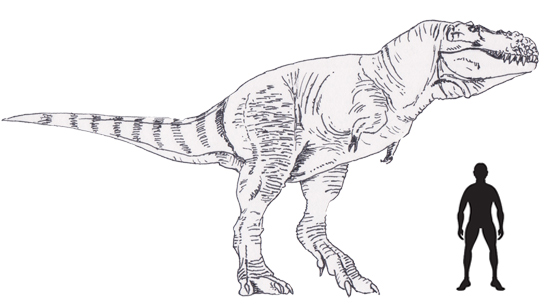
Everything Dinosaur’s scale drawing of the giant, Late Cretaceous Asian tyrannosaur Zhuchengtyrannus magnus. Picture credit: Everything Dinosaur.
Picture credit: Everything Dinosaur
Tyrannosaur maxillae are important bones as they help distinguish different genera, the different taxonomic characters can be determined by careful study of certain parts of the fossil skeleton and the maxilla and other parts of the skull are key bones in helping researchers to determine whether or not they have discovered a new genus.
To view models and replicas of Chinese dinosaurs including Zhuchengtyrannus (whilst stocks last): PNSO Age of Dinosaurs Models.
Importantly, what fossil material that has been found is in excellent condition and measurements taken of the dentary show that this new tyrannosaur would probably only have been slightly smaller than its Chinese cousin Tarbosaurus (Tarbosaurus bataar) and also not quite the size of the largest specimen of Tyrannosaurus rex known to science. But this new discovery suggests that there are other super-sized, apex predators in the tyrannosaur family.
Dr Hone comments:
“Zhuchengtyrannus is basically just another giant Tyrannosaurine in the mould of these two more famous giants [T. rex and Tarbosaurus].“
Remarkably, the site where the fossils of Zhuchengtyrannus were found may yield many other discoveries, including another giant tyrannosaur. The research team excavated a number of teeth and postcranial elements including vertebrae, femora and various metatarsals (backbones, thigh bones and toe bones). Importantly they found another maxilla and another dentary, neither of which match the material ascribed to Zhuchengtyrannus magnus or other known tyrannosaurs. This suggests that there may be at least one other tyrannosaur at the dig site awaiting further analysis.
However, if there is another taxon present, then this will complicate matters for the palaeontologists. Imagine trying to put together a jigsaw puzzle, without knowing for sure how many pieces you have or indeed the precise identity of what you are trying to create. Then imagine the added complication of having to try to put together two similar but definitely different jigsaws, with all the known pieces you have jumbled up together, each one having no illustration to guide you, and you still do not know how many pieces of each you have to work with – tricky.
The potential to find another taxon is covered in the scientific paper, but for the time being just one new taxon has been named and described. Expect to hear a lot more about the bone-beds of Shandong Province and the amazing dinosaur fossils that await discovery.
Our congratulations to Doctor David Hone and his colleagues for their work.
